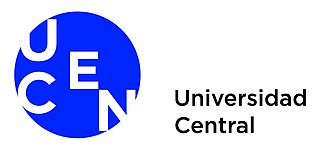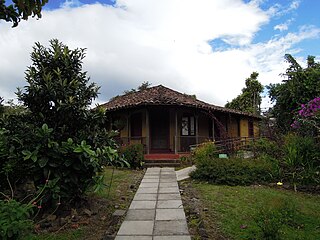
Alajuela is a province of Costa Rica. It is located in the north-central part of the country, bordering Nicaragua to the north. It also borders the provinces of Heredia to the east, San José to the south, Puntarenas to the southwest and Guanacaste to the west. As of 2011, the province had a population of 885,571. Alajuela is composed of 16 cantons, which are divided into 111 districts. It covers an area of 9,757.53 square kilometers.
The Autonomous Technological Institute of Mexico, commonly known as ITAM, is a private university located in Mexico City. It is one of Mexico's most important institutions of higher learning; highly prestigious in the social sciences. It is also considered one of Mexico's think tanks and has the highest rank of admission to the Mexican Foreign Service.

The Centro de Investigación y Docencia Económicas is a Mexican center of research and higher education, specialized in the fields of social sciences, with an international-grade level of excellence. It is financed with public resources. It has been consistently included in the Global Go To Think Tank reports as one of Mexico's top ten think tanks.
The Central American Technological University (Spanish: Universidad Tecnológica Centroamericana) (UNITEC) is a private coeducational institution with campuses in the three main cities of Honduras: Tegucigalpa, San Pedro Sula and La Ceiba.
Fernando Ramón Martínez Heredia was a prominent Cuban revolutionary thinker and politician. Martínez was a founding member of the Cuban Communist Party, and as a member of the July 26 Movement, he took part in the Revolution which overthrow the Batista dictatorship.

Alajuela is a canton in the Alajuela province of Costa Rica. Its head city is the provincial capital city of Alajuela.

Poás is a canton in the Alajuela province of Costa Rica. The head city of the canton is San Pedro.

Barva is the second canton in the province of Heredia in Costa Rica.

Universidad Central de Chile, abbreviated as UCEN, is the first autonomous private university in Chile, founded in 1982 in Santiago de Chile. It's accredited in the areas of institutional management and undergraduate teaching by the National Accreditation Commission of Chile for a term of four years from December 2017 to December 2021.
Varablanca is a district of the Heredia canton, in the Heredia province of Costa Rica.
The North American Consortium on Legal Education (NACLE) comprises 13 participating law schools in Canada, Mexico, and the United States. The general purpose of NACLE is to promote and share understanding of the legal systems within North American countries. The specific purpose of the Consortium is to enhance the capabilities of each member to provide high quality legal education and research appropriate to the demands of the professional environment in North America.

María Isabel Studer Noguez is Director of Alianza University of California-Mexico. She was Director for Strategic Initiatives for Latin America and Executive Director for Mexico and Northern Central America of The Nature Conservancy. She was Director General for International Economic Cooperation at the Mexican Agency for International Cooperation, where she launched the Partnership for Sustainability with the aim of engaging the private sector in developing public-private projects around the 2030 Sustainable Development Agenda. For almost a decade, she was a professor and researcher in international relations at the Monterrey Institute of Technology and Higher Education, principally working as the director of the Instituto Global para la Sostenibilidad (IGS), formerly the Centro de Diálogo y Análysis sobre América del Norte (CEDAN). She began her academic career working in international relations and has held positions in both Mexico and the United States teaching, researching, advising and writing on topics related to international relations, especially in North America, business and environmental issues. Her publications include books, scholarly articles as well as articles and columns for various media.
Susana Catalina Chacón Domínguez is a professor and researcher with the Monterrey Institute of Technology and Higher Education. Her work has been recognized with Level II membership in Mexico’s Sistema Nacional de Investigadores as well as membership in the Club of Rome.

Purabá is a district of the Santa Bárbara canton, in the Heredia province of Costa Rica. The district consists of several large neighborhoods: San Bosco (Bosconia), Marías, Purabá, Lajas, and Calle Quirós.
Emma Gamboa Alvarado, was a Costa Rican educator, recognized for her contributions to pedagogy and teaching. She was declared Benemérita de la Patria by the Legislative Assembly of Costa Rica in 1980. She was depicted on the ten thousand colones bill of 1998.

Santa Lucía is the fifth district of the Barva canton, in the Heredia province of Costa Rica.
Margarita M. Birriel Salcedo is a tenured professor in the Department of Modern and American History at the Faculty of Philosophy and Letters of the University of Granada. She is an expert in women's history and women's studies.









